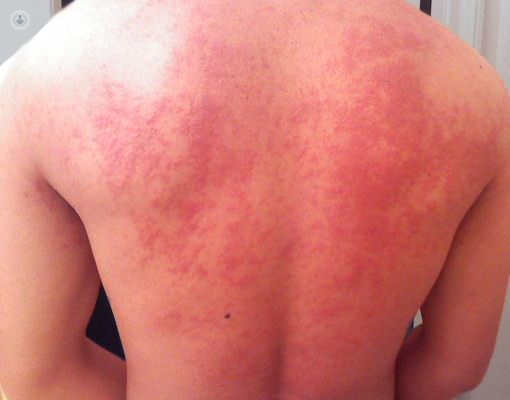Histamine intolerance
What is histamine?
Histamine is a natural chemical that is created by the body and can be ingested in food. It has several roles in the body’s function:
- Communicating messages to the brain
- Aiding digestion by triggering the release of stomach acid
- Part of an immune response to injury or in allergic reactions
Histamine occurs in varying levels in many different foods. When ingested, the body uses enzymes such as diamine oxidase (DAO) to break it down.

What is histamine intolerance?
Histamine intolerance is a rather misleading name, as it refers to an excess of histamine in the body rather than a sensitivity to it. Maintaining the correct amount of histamine in the body is very important; a deficit of histamine can be deadly, while an excess causes symptoms harmful to the patient.
Symptoms of histamine intolerance
Symptoms of histamine intolerance are similar to those of allergic responses and many other diseases, which often makes diagnosis difficult. The main symptoms of histamine accumulation in the body are:
- Headaches and migraines
- Nasal congestion
- Fatigue
- Skin problems, such as dry skin, dermatitis and hives
- Digestive problems, such as diarrhoea, abdominal swelling, gastritis, etc.
- Nausea and vomiting
- Abdominal cramps
- Irregular menstrual cycle
- Pain in the bones and joints
- High blood pressure
- Irregular heart rate
What causes histamine intolerance?
High histamine levels are often caused by a deficiency in the enzyme DAO, which helps to break down histamine. Such a deficiency could be caused by:
- Medications that block DAO production or function
- Certain foods that block DAO
- Gastrointestinal disorders, such as inflammatory bowel disease (IBD) or leaky gut syndrome
Other contributing factors are those that increase histamine levels to the point that enzymes cannot keep up:
- Ingesting a lot of histamine-rich food
- Ingesting food that stimulates histamine release by the body
- Bacteria overgrowth
Treatment and prevention of histamine intolerance
Histamine intolerance usually consists of a low-histamine diet. This consists of avoiding foods high in histamine, such as:
- Alcohol and other fermented beverages
- Aubergines
- Avocados
- Spinach
- Dried fruits
- Dairy products and other fermented foods
- Processed or smoked meat
- Shellfish
Foods that trigger histamine release in the body should also be avoided. These include:
- Alcohol
- Bananas
- Citrus fruits
- Papaya
- Tomatoes
- Beans
- Certain nuts, e.g. walnuts, cashews, peanuts, etc.
- Chocolate
- Wheat germ
- Food dyes and additives
There are also things that block DAO production and function, such as:
- Alcohol
- Black tea
- Green tea
- Mate tea
- Energy drinks
There is no such thing as a histamine-free diet, but it is possible to follow a low-histamine diet. Doctors and dieticians may recommend eating food such as:
- Fresh meat and fish
- Eggs
- Gluten-free grains
- Non-citrus fruits
- Dairy substitutes, e.g. almond milk
Since the symptoms of histamine intolerance mimic those of allergies and other conditions, it should never be self-diagnosed – always consult a doctor if you experience symptoms and follow their dietary advice.